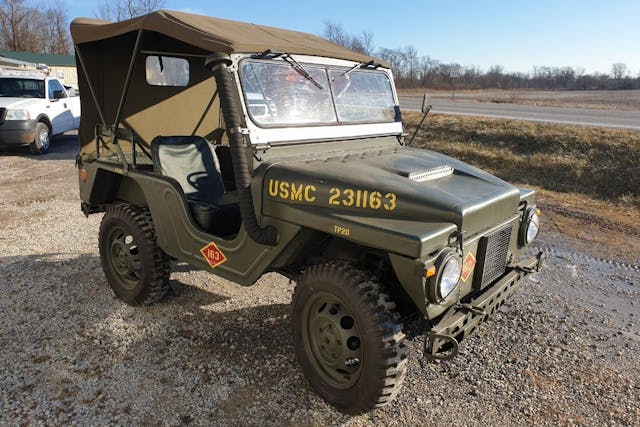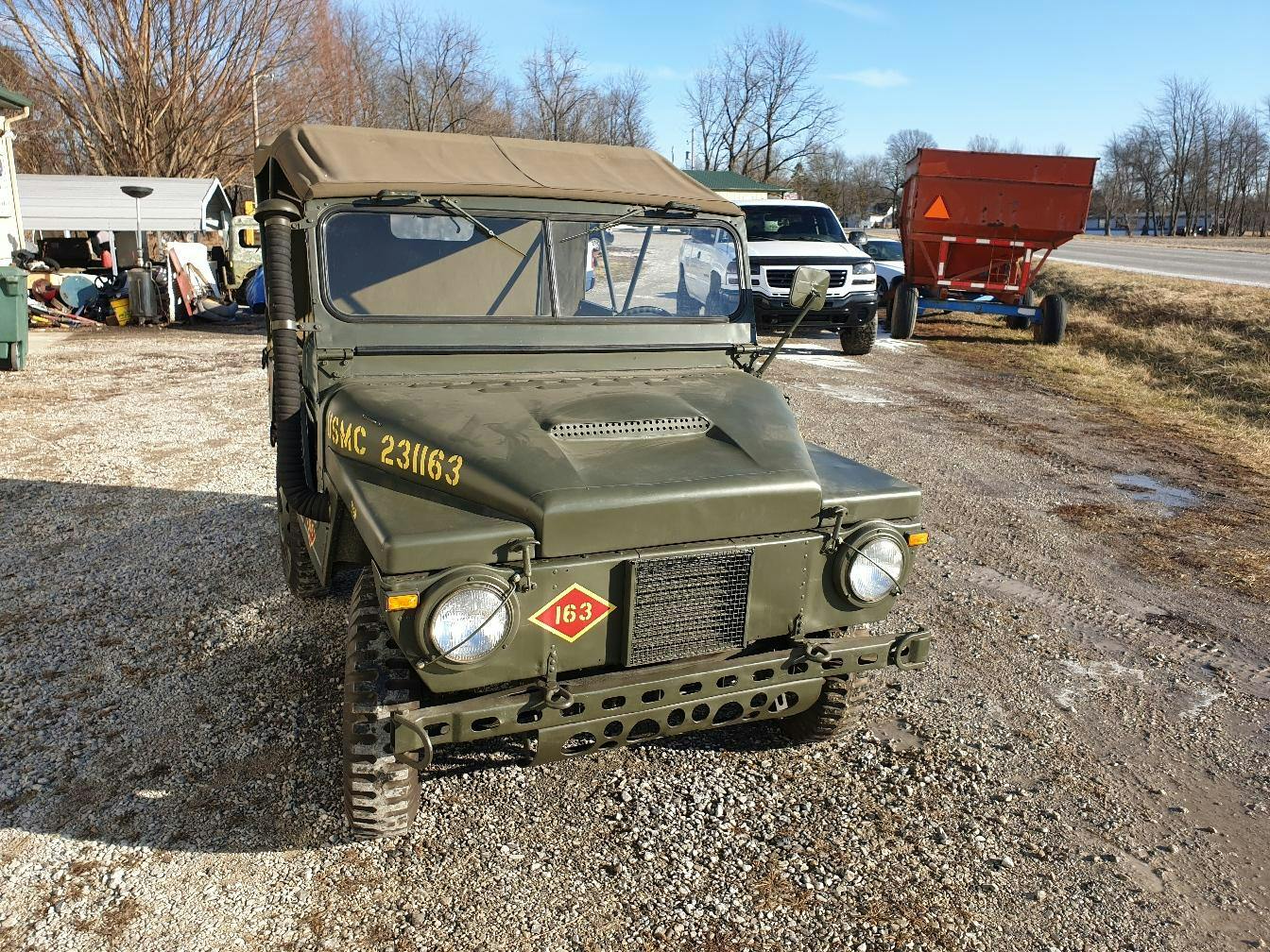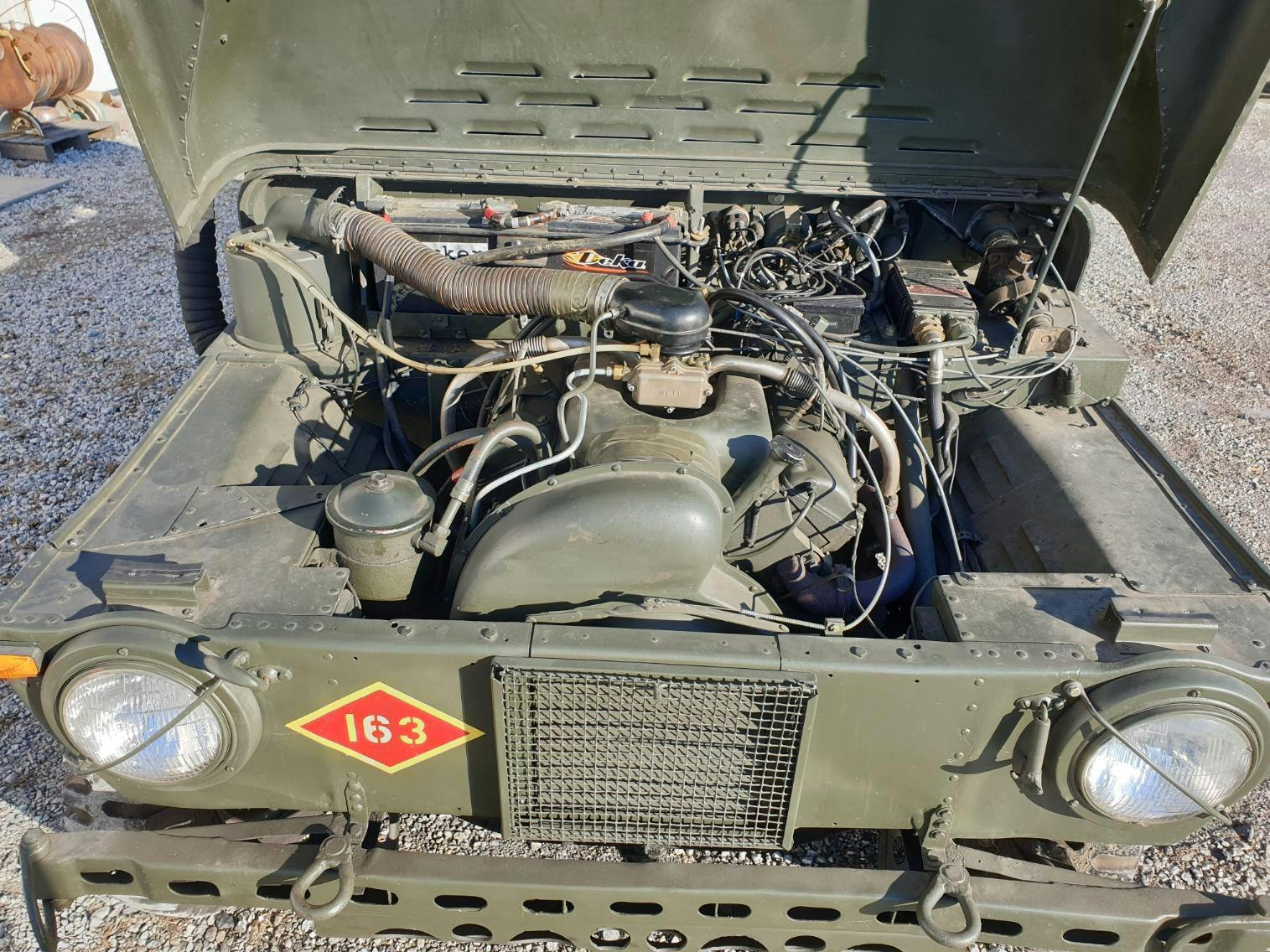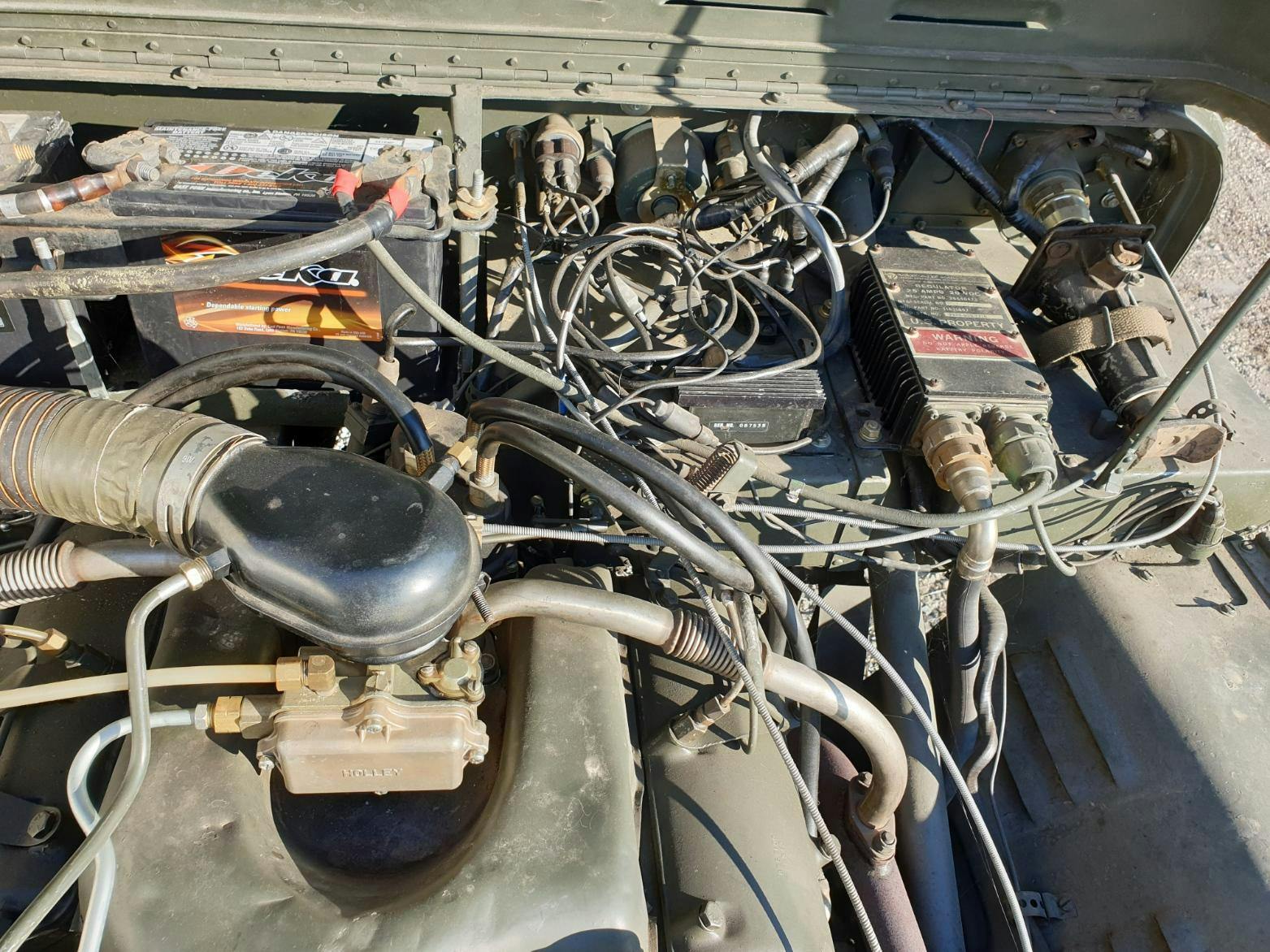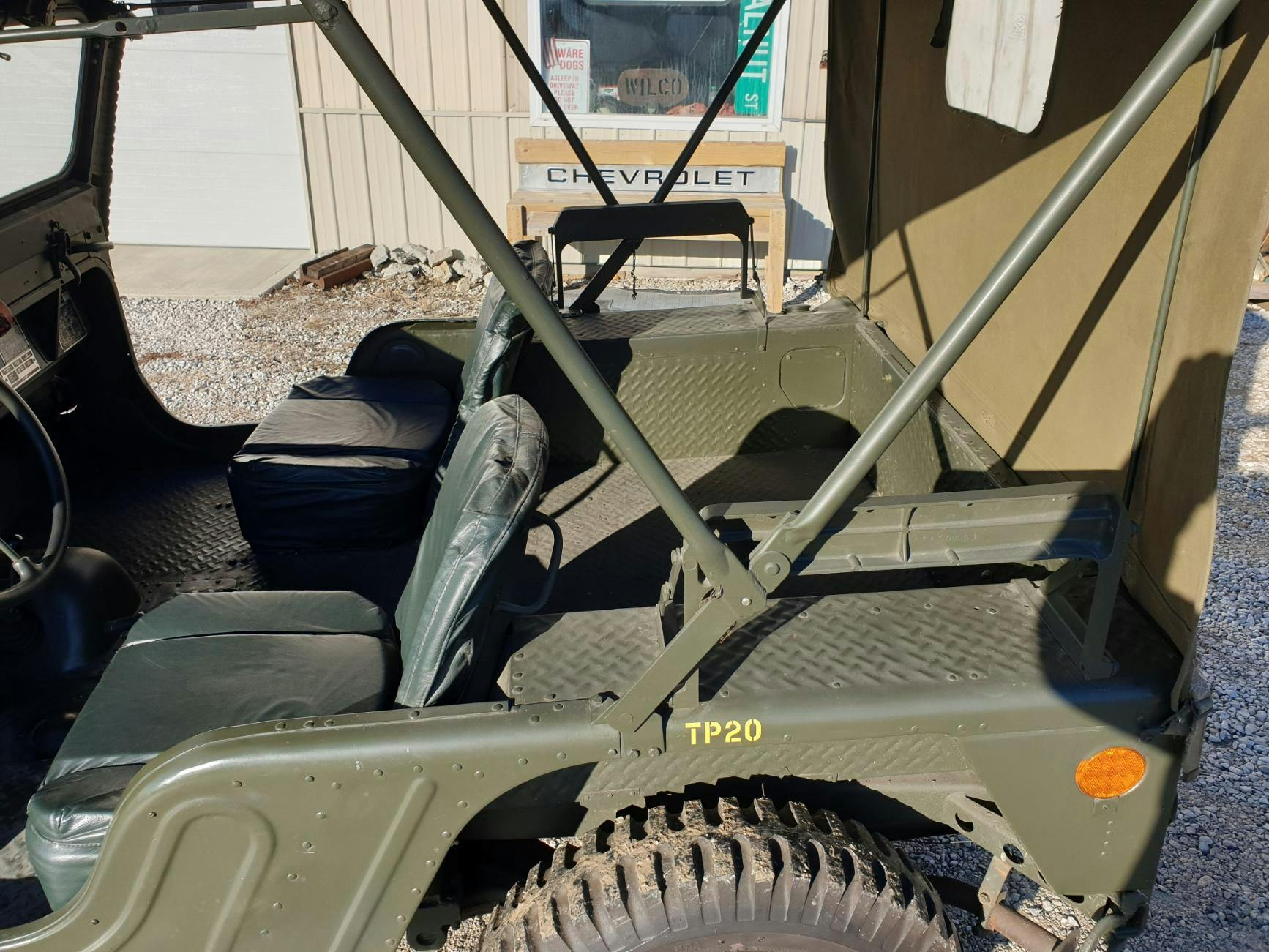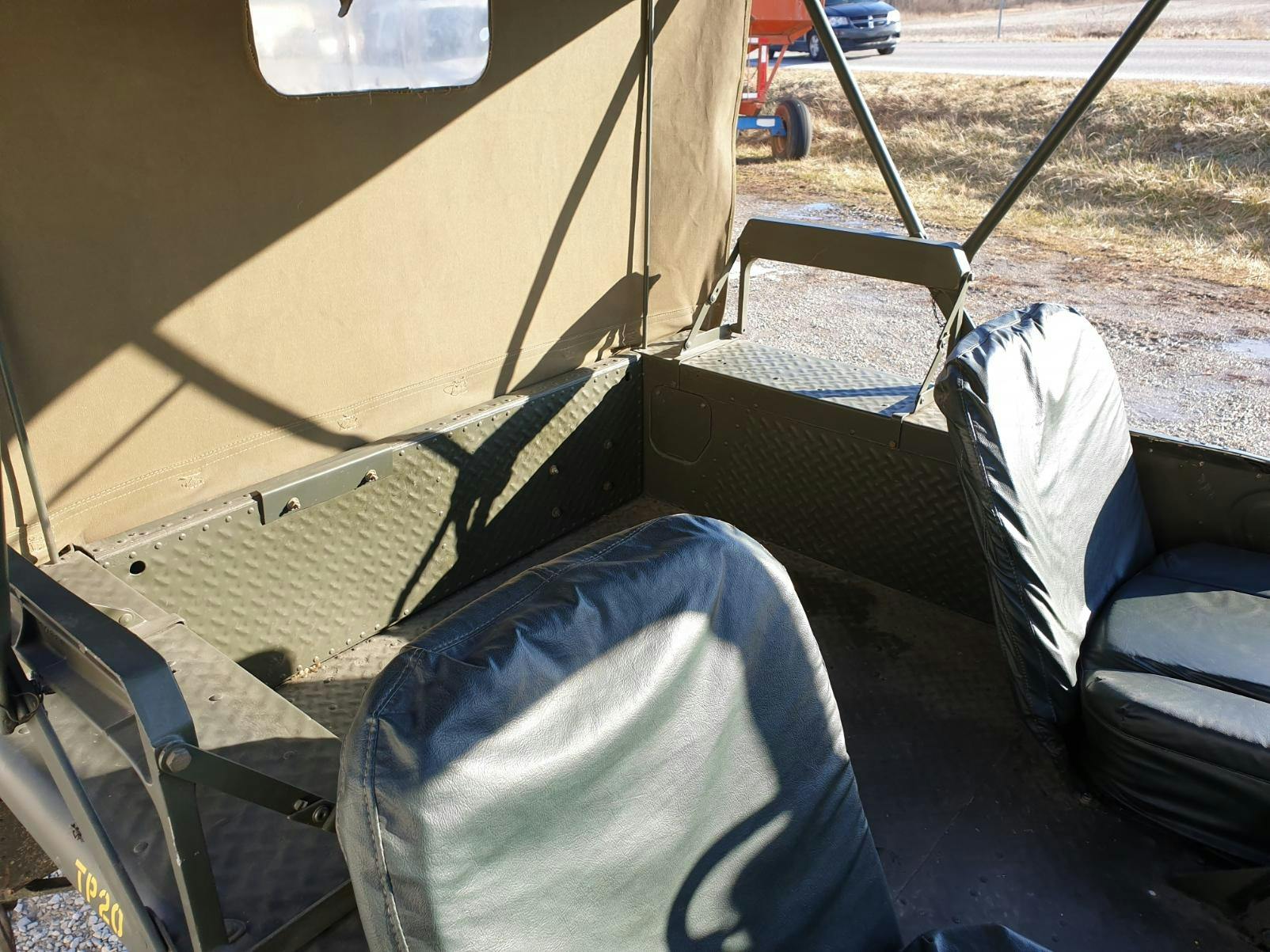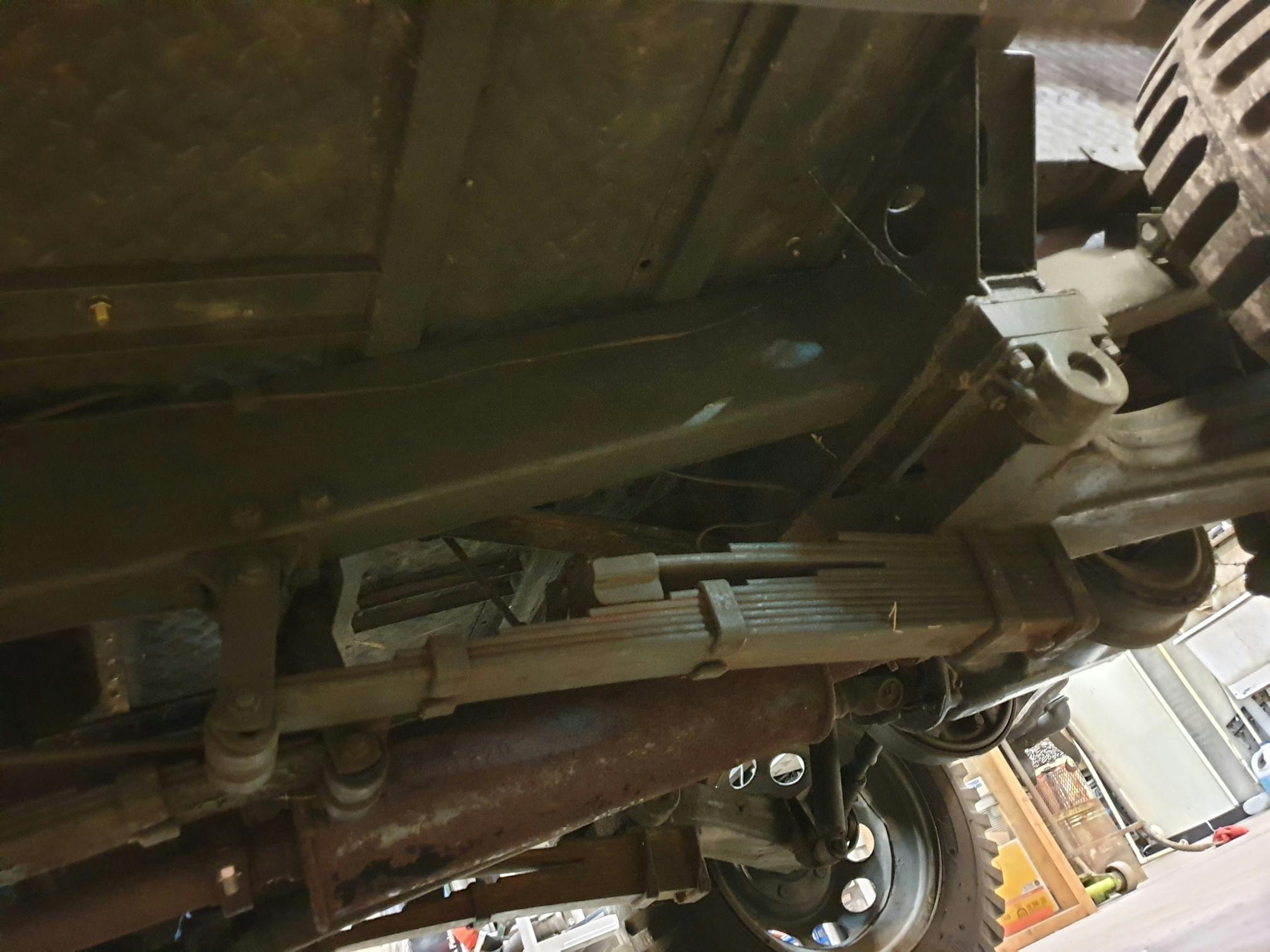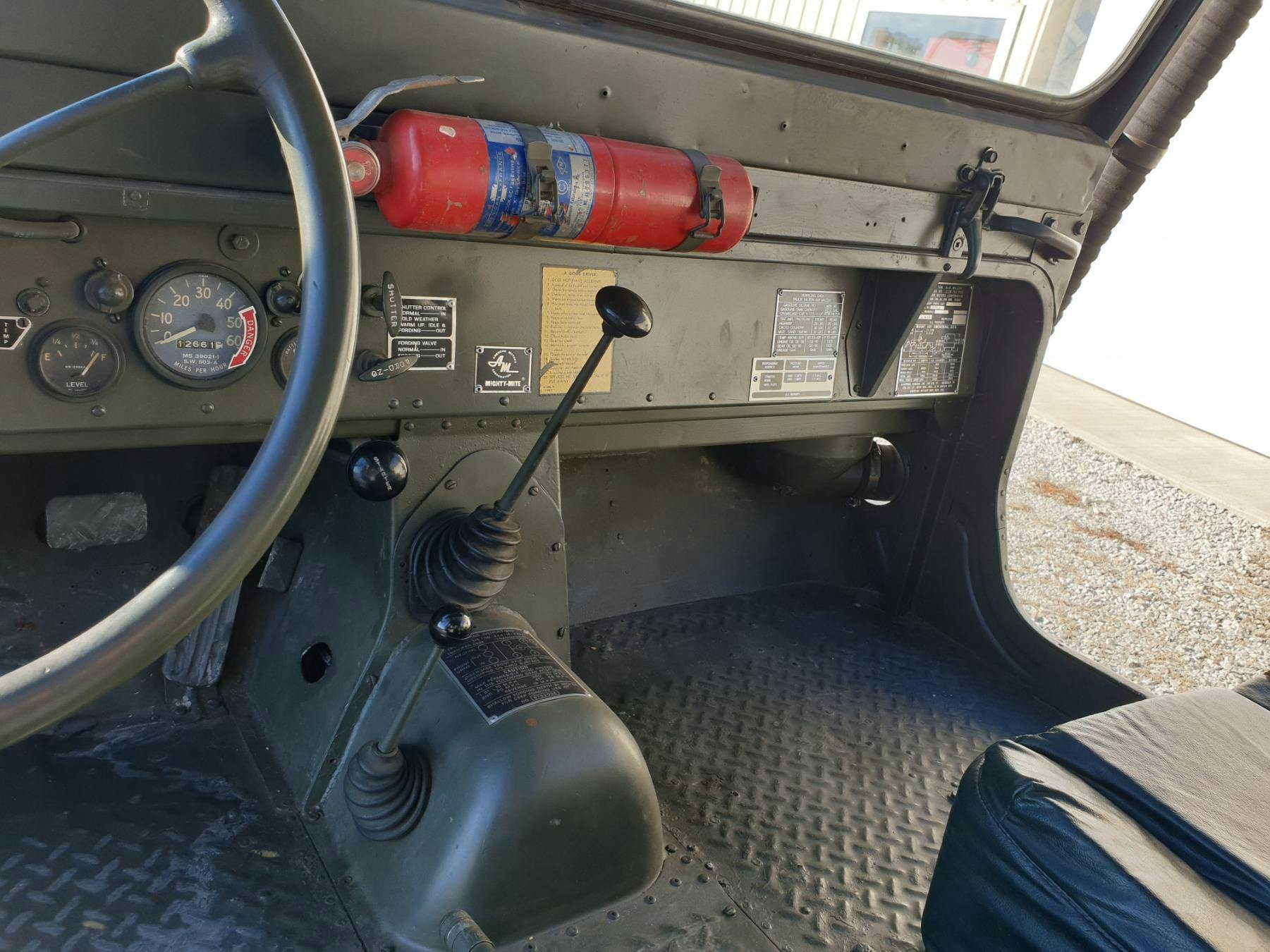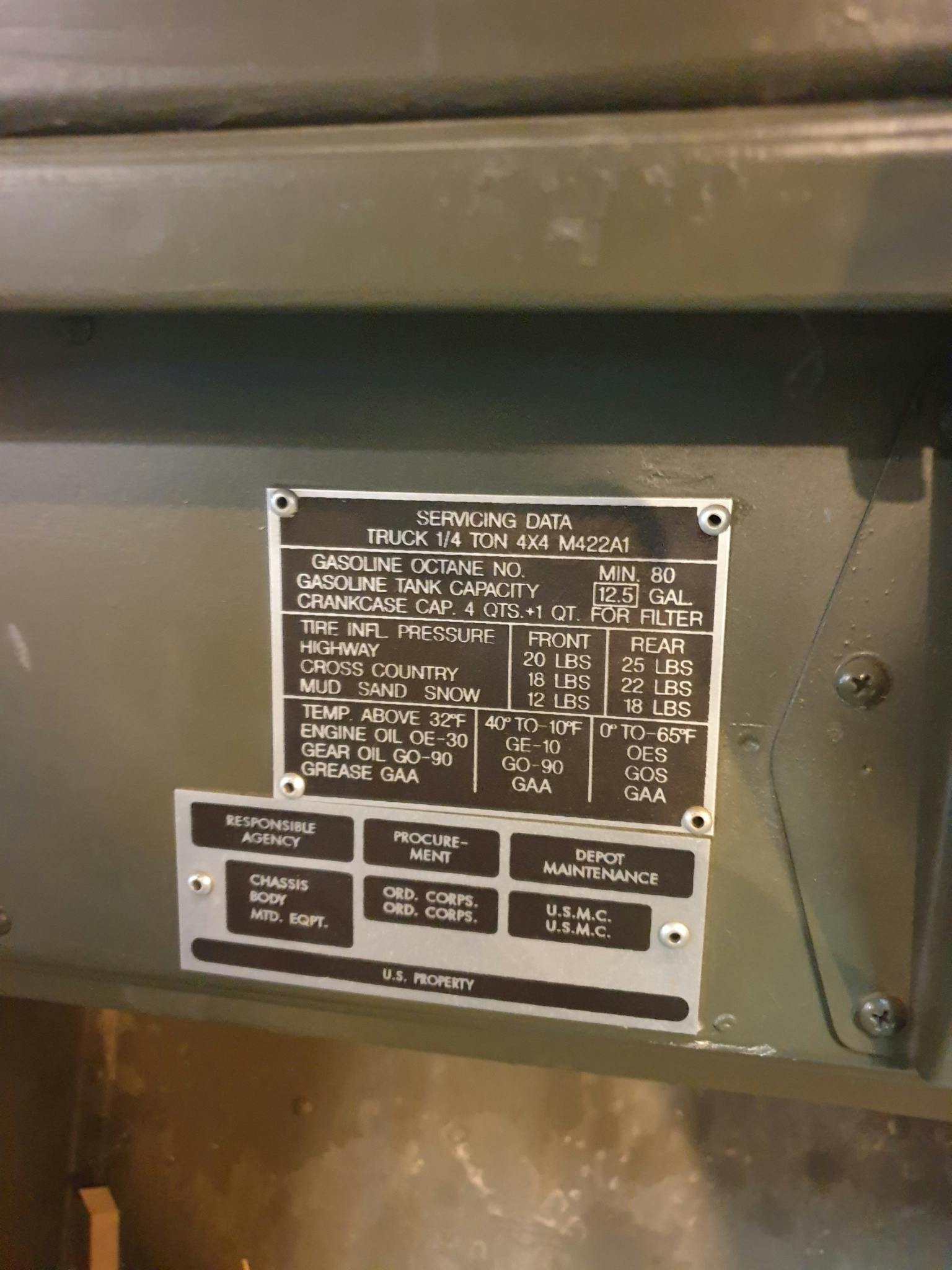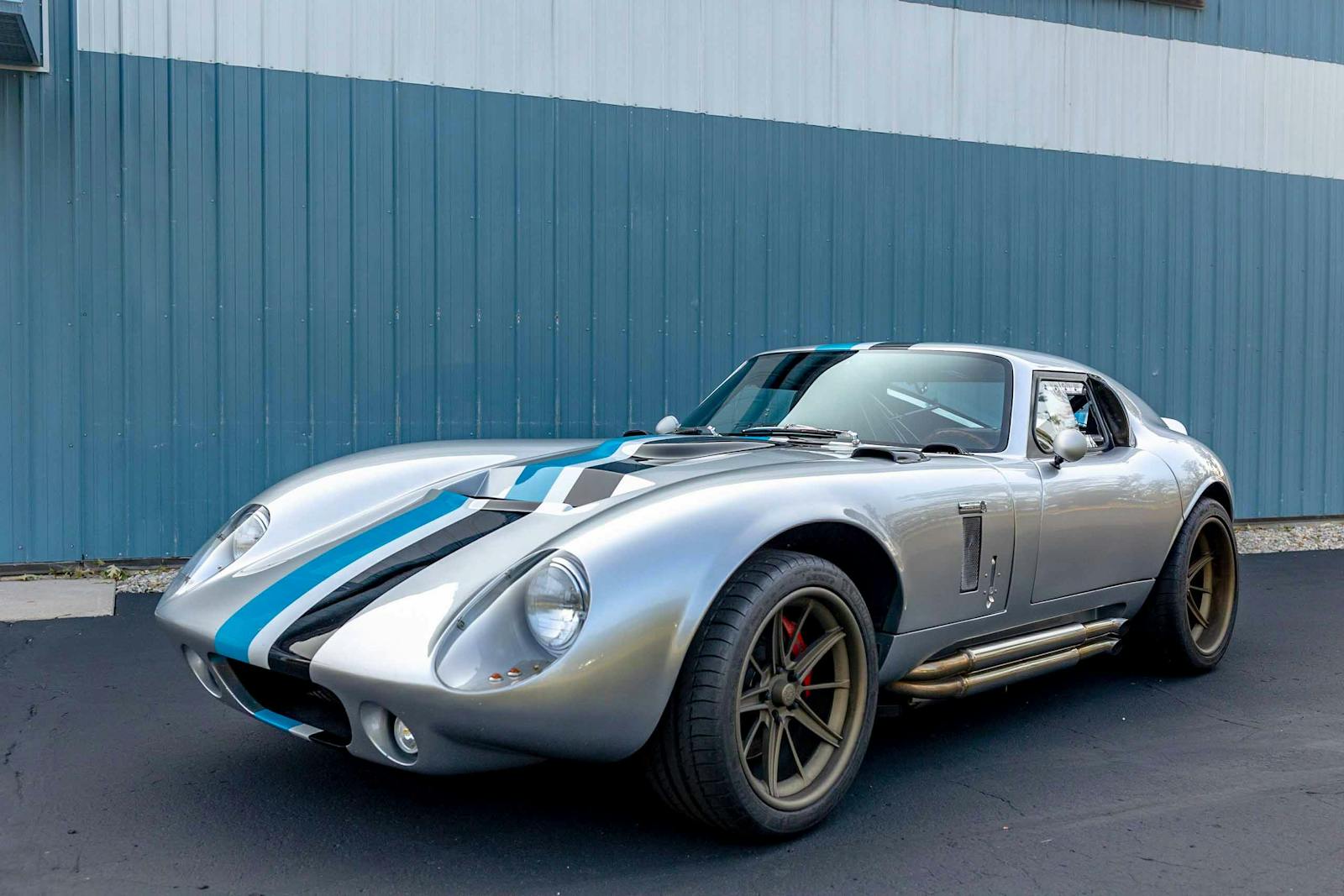AMC’s rare Mighty Mite is a forgotten military flyweight
Military collectors express their inner patriot in a variety of ways, but it’s safe to assume that a machine both bodied in and powered from aluminum is not top of mind. What AMC’s Mighty Mite proves is that there always is/was a tool for every job, even in a realm that’s measured in tons and enamored with the security of hardened steel. Today, weighing in at roughly 1700 pounds, this restored Mighty Mite (M-422A1) on Bring a Trailer is one of the more practical ways that an average Joe can enjoy something olive green without the need for a new pole barn or chiropractor.
If you’re wondering why the U.S. military would ever pursue a design in material that’s basically paper mâché (by the standards of war), you’re not alone. Truth be told, the beginning of the Mighty Mite, or its basic concept, actually dates back roughly 20 years earlier, just after WWII, under a much different title, MARCO MM-100. The evolving strategy at the time focused on air travel and moving small 4×4 machines in the skies. Not only would a vehicle’s design need to be lightweight but also maneuverable while maintaining a comfortable ergonomic standard for its operators once deployed.
Ironically, motivated mainly by weight savings and availability, the MM-100 sourced Porsche air-cooled flat-four engines, that made 44 hp at 4200 rpm. With a tiny German heart under the hood, the resulting little monster tipped scales at right around 1500 pounds, with a length of 96 inches tip to tail. As legend has it (in phenomenal detail here), a MARCO exec remarked, “It looks like a mite, but a Mighty Mite!” The name stuck.
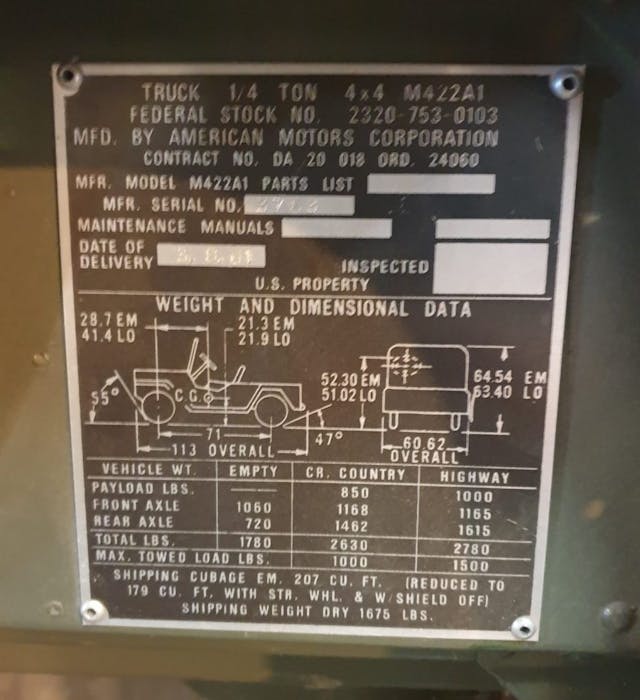
Seemingly, the U.S. Marine Corps was hot for the MARCO MM-100 but ultimately stalled. Why, you may ask? It turns out a Porsche flat-four and its lack of bald eagle DNA didn’t sit right with the brass, giving it reason to hem and haw; a purgatorial barrier that proved too steep to surmount. It became evident that MARCO needed help, and the newly formed American Motors Corporation (1954) had the answer.
When Nash and Hudson merged into AMC, it married two established halves, each with their own projects well underway. One of those developments was an aluminum air-cooled V-4 engine that mustered 50 hp, originally intended for Nash’s econo cars. As AMC began to take shape, the little V-4 stagnated into irrelevance as the new company’s civilian products outgrew a use for the little engine’s displacement. By this time MARCO’s MM-100 venture was at the end of its rope financially, and coincidentally AMC, wanting to increase its footprint in commercial markets, threw the Mighty Mite a lifeline by acquiring the project. It now possessed the right American optics and engine to earn a development contract and carry through to production.
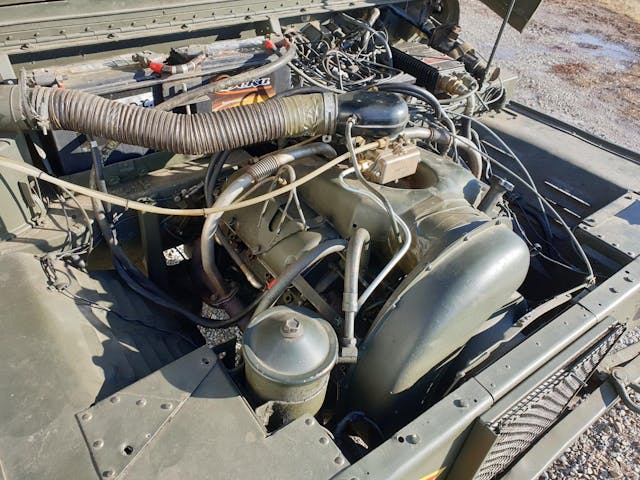
With AMC’s resources, the Mighty Mite had renewed life and purpose in the eyes of the USMC, which specifically targeted the vehicle for its objectives; namely, in lock-step with the ability to be cable-lifted and deployed by a H-19 Sikorsky ’copter in Vietnam. The original M-422 version grew by 200 pounds as small upgrades piled into the design. Total weight now at 1700 pounds, the Mighty Mite still maintained its integrity as an air-liftable 4×4 auto. Bear in mind, as the design of the Mighty Mite hit puberty, so did aeronautics technology and aircrafts; a little more weight would be of marginal issue so long as the capacity math all added up. The final iteration of the Mighty Mite is the M-422A1 (our listing’s example). It elongates the original M-422 by 6 inches, furthering the wheelbase out to 71 inches (109 total). The USMC was sold already, but the M-422A1 was by far the more useful, with an expanded rear carrying capacity. But there were vulnerabilities. More specifically, the trade-off of a lightweight vehicle meant lightweight protections from both incoming enemy fire and hazards of the jungle. Were Mighty Mites able to land into tight spots? Absolutely. Were they always able to get out of them? No.
The Mighty Mite met its end quickly once the lifting capacities in aeronautics grew exponentially. In 1959, the Bell UH-1 Iroquis (“Huey”) helicopter came onto the scene and with it a lift capacity that dwarfed the former Sikorsky. Relatively speaking, from that point on, the armed forces no longer needed to compromise on weight restrictions. The Mighty Mite found itself on the outside looking in. And unfortunately for its future prospects, AMC ultimately decided the Mighty Mite wasn’t worth the trouble for civilian development.

From a military collector’s standpoint, there’s a lot to like about the Mighty Mite. For one, everything is heftable. You’re not deadlifting the wheel and tire of a 5-ton 6×6. Getting the vehicle off the ground can be done in a driveway. And covered storage is as easy, since Mighty Mites possess a small footprint. On the other hand, consider it’s a bespoke made machine, one manufactured around a very specific set of requirements. Parts (at least interchangeable ones) can’t be found in abundance, like your more common mil-spec Willys or AM General jeeps. As a result, it’s not uncommon for barn finds to uncover a pair together, one to run and one to pull from. The aluminum V-4 engines themselves are delicate creatures, fine with the correct care, but nothing guarantees that the prior owner(s) haven’t slipped up in this regard. Granted, with the strong USMC connection, many of the Mighty Mites out there are veteran owned and loved, and the resources and community support around them might surprise you, given their total production petered out just shy of 4000 units.
There’s a special place in everyone’s heart for a small four-speed 4×4 with limited-slip front and rear differentials. All the more when that little rig is clearly well-cared-for and ready for its next adventure. I’ll admit, while Mighty Mite is a damn fine name, a part of me still wishes the Brits hadn’t already lay claim to the Flying Flea.
Something about an “AMC Flying Flea” just has a special ring to it.
